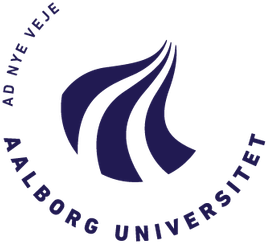
Aalborg University (AAU, https://www.aau.dk/) is a dynamic and innovative research and educational institution that is continuously being ranked among top institutions worldwide; e.g., AAU engineering has been recently ranked as 4th in the world and 1st in Europe in a recent MIT report.
The project SIXTHSENSE will be developed at the Department of Electronic Systems (DES) and the Department of Health Science and Technology. DES is one of the largest departments at Aalborg University with a total of more than 200 staff. Research activities at DES are carried out in cooperation with industry as well as national and international research institutions. DES is internationally recognized for the contributions in information and communication technology, publishing pioneering results in the field of machine-type communications (MTC), Internet-of-Things and ultra-reliable low-latency communications (URLLC). DES staff took part in the flagship EU research projects on 5G, like METIS (Mobile and wireless communications Enablers for Twenty-twenty (2020) Information Society), Fantastic 5G (Flexible air interface for scalable service delivery within wireless communication networks of the 5th Generation) and ONE5G (E2E-aware Optimizations and advancements for the Network Edge of 5G New Radio).
The Department of Health Science and Technology (HST) at AAU constitutes Denmark’s largest integrated health technology research and teaching environment. The laboratories of the HST department are equipped to support state-of-the-art research and teaching. The SIXTHSENSE project will be developed at SMI®, Center for Sensory-Motor Interaction, which is the largest research centre at the HST department. SMI® is an international research and training centre employing approximately 80 researchers, with 50% of the staff coming from abroad. Translational research in neuroscience and engineering is the primary focus of SMI®. The established research co-operation and partnerships with a wide range of research centres, hospitals, and companies constitute a substantial resource for SMI®. Currently, co-operation includes more than 40 organisations in 15 countries and 20 national and international companies. Interdisciplinarity, international collaborators, and engaged and highly educated researchers are the main resources at SMI®.
The researchers from DES have expertise in ultra-reliable low-latency communications (URLLC), to which mission-critical communications belong. The focus of their research is on wireless networking, covering the topics of wireless propagation, antenna design and high-performance algorithms for the reliable and timely delivery of data. Their contributions to the 5G research are numerous and, among others, include statistical characterization of URLLC links, access protocols for URLLC, and multi-connectivity for reliable data transfer.
The HST team has an extensive experience in implementing artificial sensory feedback to human subjects using electro and vibrotactile interfaces, in particular by relying on multichannel stimulation (which is also used in SIXTHSENSE). They have expertise in psychometric procedures that are used to assess the quantity and quality of elicited sensations as well as information throughput via the tactile feedback channel. Finally, they have knowledge in planning, designing and performing experiments in human subjects. Key persons assigned to the project
Role of AAU in the project: The researchers from DES will be responsible for research and development of mission-critical communication solutions to be used in SIXTHSENSE. These will include both the in-field communications among the first-responder team-members, as well as the communications between the team-members and the coordination and support centre. DES will lead WP8 in the project.
The team from HST department will develop tactile coding schemes to translate the messages that need to be transmitted to the first responders into the parameters of electrotactile stimulation. The stimulation patterns will be designed using modulation of intensity, frequency and/or location to transmit the information effectively. In addition, the effectiveness and throughput of the information transmission through the tactile channel will be assessed by performing psychometric experiments in a number of human subjects. HST will contribute to WP7.

